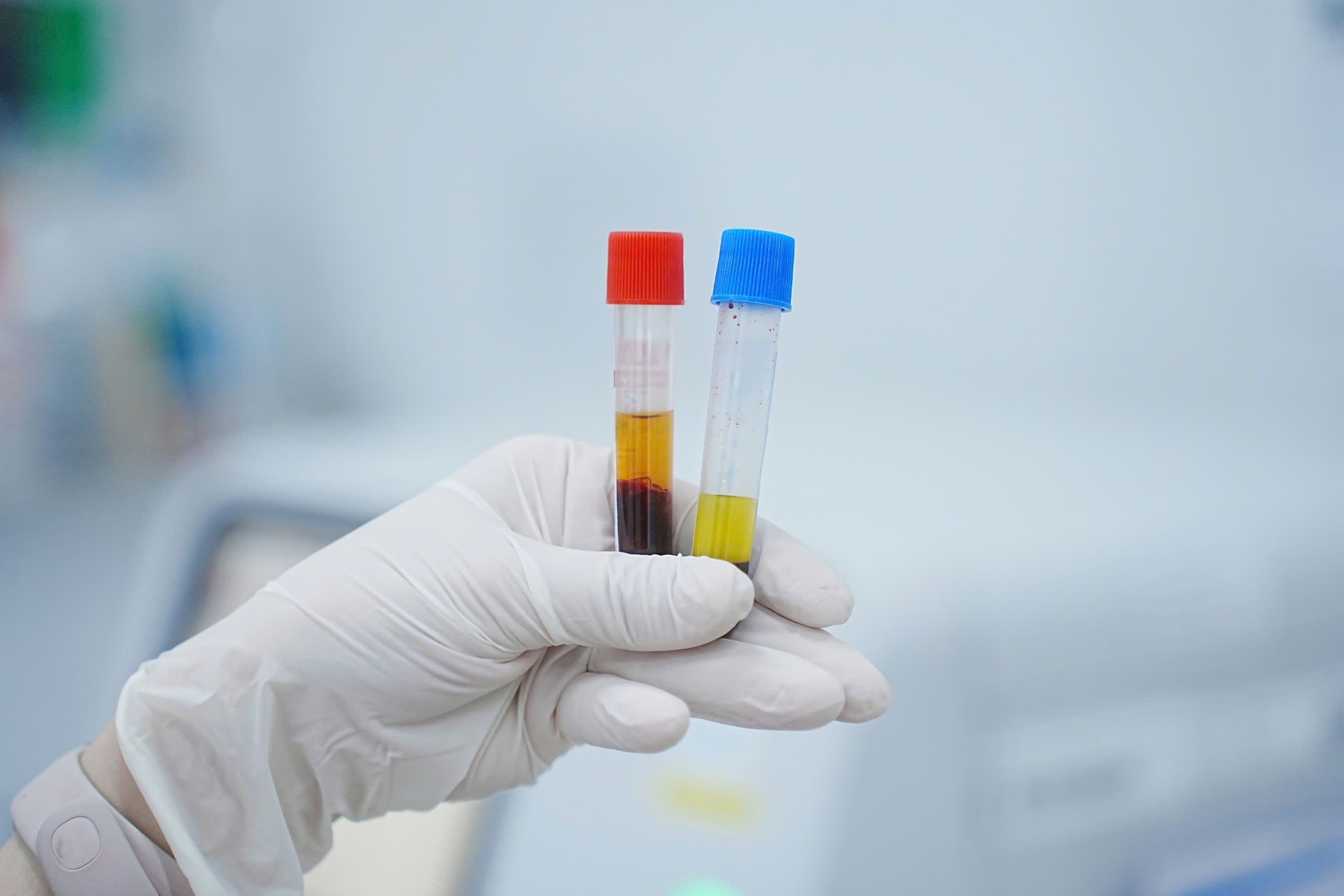Abnormal test score
On May 15, Ho Chi Minh City University of Medicine and Pharmacy Hospital, Facility 3, said that the unit receiving the male patient (29 years old) was discovered to have whey protein huyet thanh like milk during a periodic health check-up at the hospital.
The results of biochemical tests showed that the concentration of triglycerides in the blood reached 2,250 mg/dL, nearly 15 times higher than the normal threshold.
Although there were no clinical signs, the patient had severe blood lipid disorder, which poses a risk of acute pancreatitis and anemia stroke.
Testing technician Nguyen Thi Nha An said that the patient's examination and diagnosis records did not show any abnormalities when initially receiving the patient. However, during the process of processing blood samples, signs of abnormality appeared clearly through observing serine images.
The blood after the heart glass is turbid white, no longer in gold as usual. This cloudy serum nature is a sign for many types of disorders, in this case of severe hyperlipidemia, mainly high triglycerides in huyet tuong.
Dr. Kieu Xuan Thy - Deputy Head of Facility 3 of Ho Chi Minh City University of Medicine and Pharmacy Hospital commented that this is a typical case for young patients but has worrying metabolic risk factors.
In this case, the patient had no clinical symptoms. If not detected through regular screening, the risk of acute events such as stroke or acute pancreatitis in the future is entirely possible.
Many young people are still subjective about their health
Recent statistics at end-of-line general hospitals record an increasingly young trend of stroke, in which the age group from 30 - 40 accounts for a significant proportion.
Common risk factors include high blood lipid disorders, especially triglycerides; belly fat, lack of exercise; diet high in saturated fat, ultra-processed foods; high blood pressure, unsymptemic type 2 diabetes.

"It is worth noting that many young people are still subjective about their health because they do not have obvious symptoms. Meanwhile, vascular damage and atrophy have been going on silently for many years before the incident" - Dr. Xuan Thy emphasized.
To effectively control blood lipids, Dr. Xuan Thy recommends that people should maintain 3 groups of measures in parallel, including reasonable nutrition; lifestyle changes; and periodic tests.
triglyceride levels >100 mg/dL are considered a very high risk of acute pancreatitis. When triglycerides exceed about >2000 mg/dL, the risk does not stop at the pancreas but is also clearly associated with major blood vessel diseases such as cerebral anemia and coronary artery disease.
According to the pathogenesis mechanism, high triglycerides increase blood viscosity, affecting peripheral Circulation, causing damage to the endothelial vessel layer. The formation of plaque fibrosis from chronic inflammatory reactions will narrow the vessel. When these plaques rupture, thrombosis can form, causing blockage of cerebral blood vessels or coronary arteries.
Additionally, triglycerides increase if accompanied by a reduction in HDL-C, which loses the natural defense mechanism of blood vessel walls.











